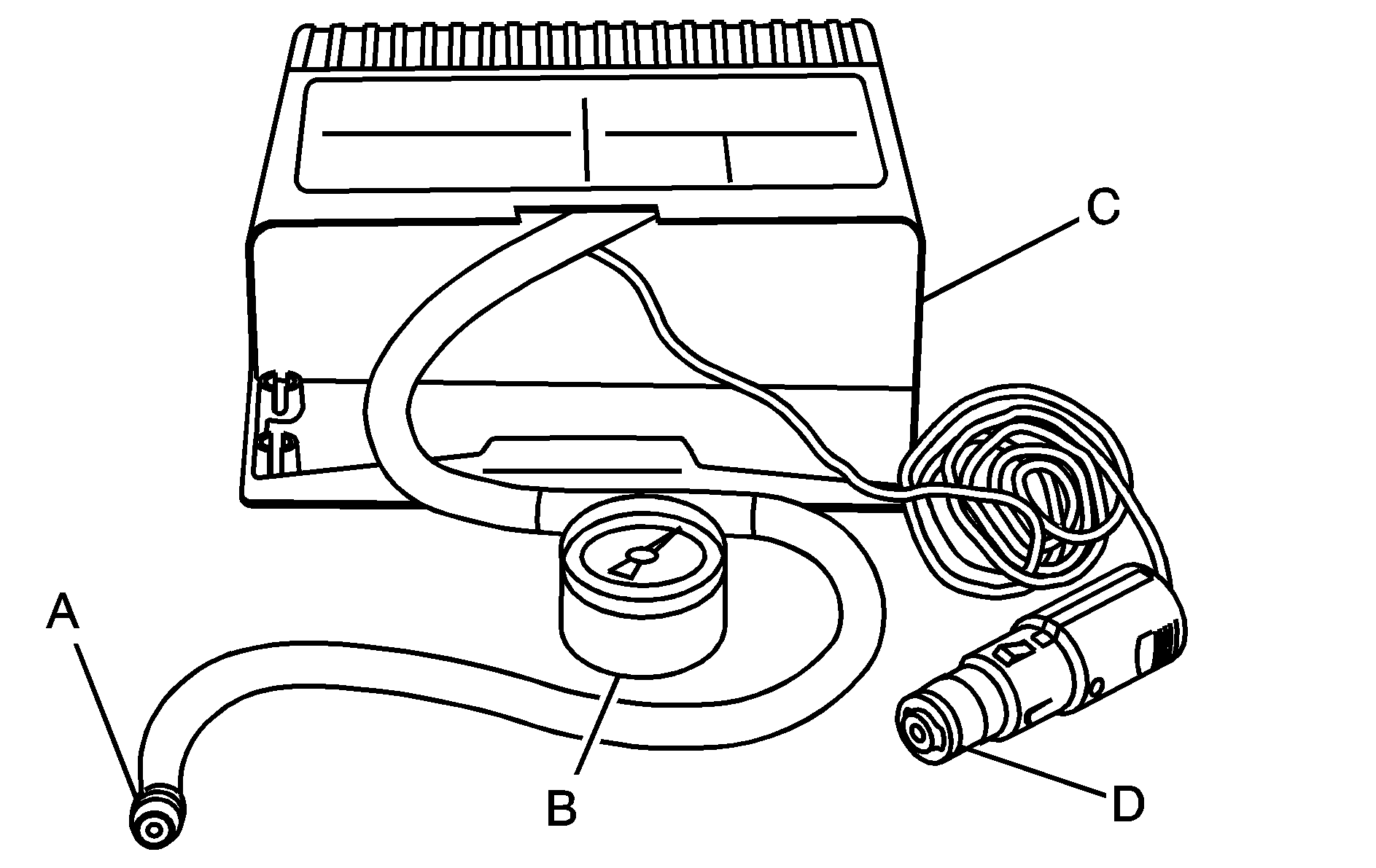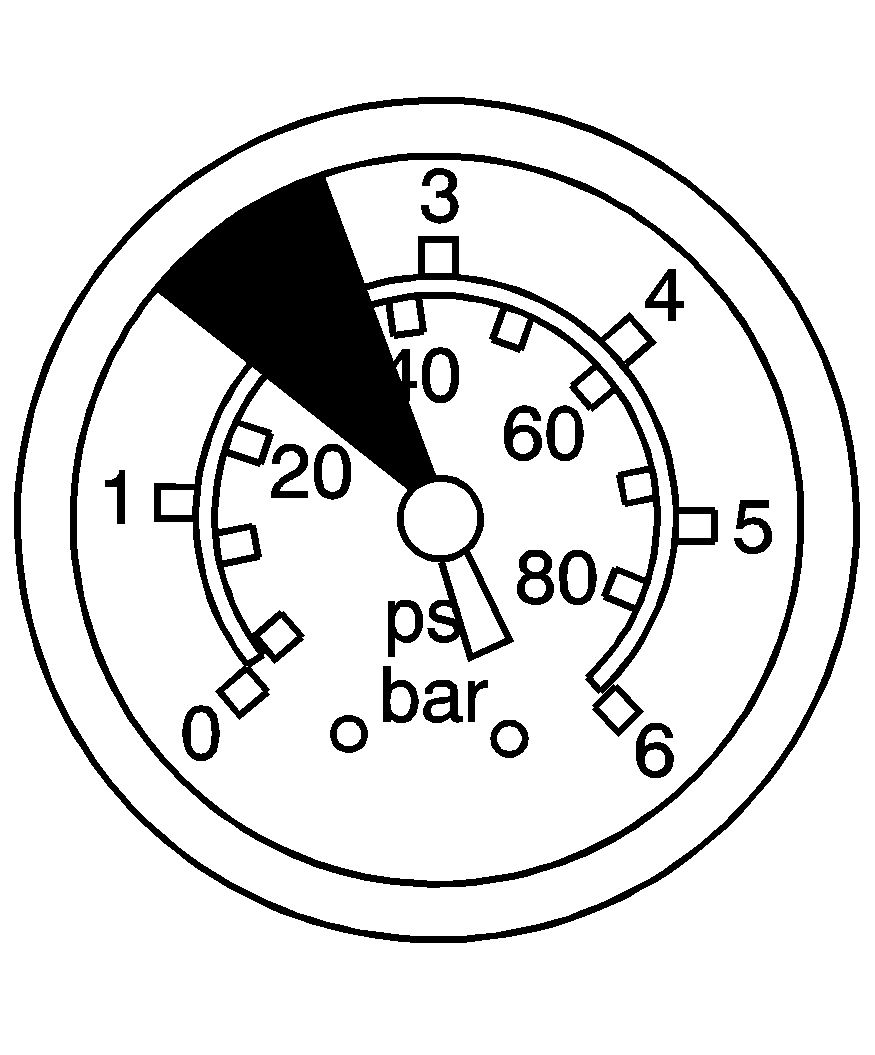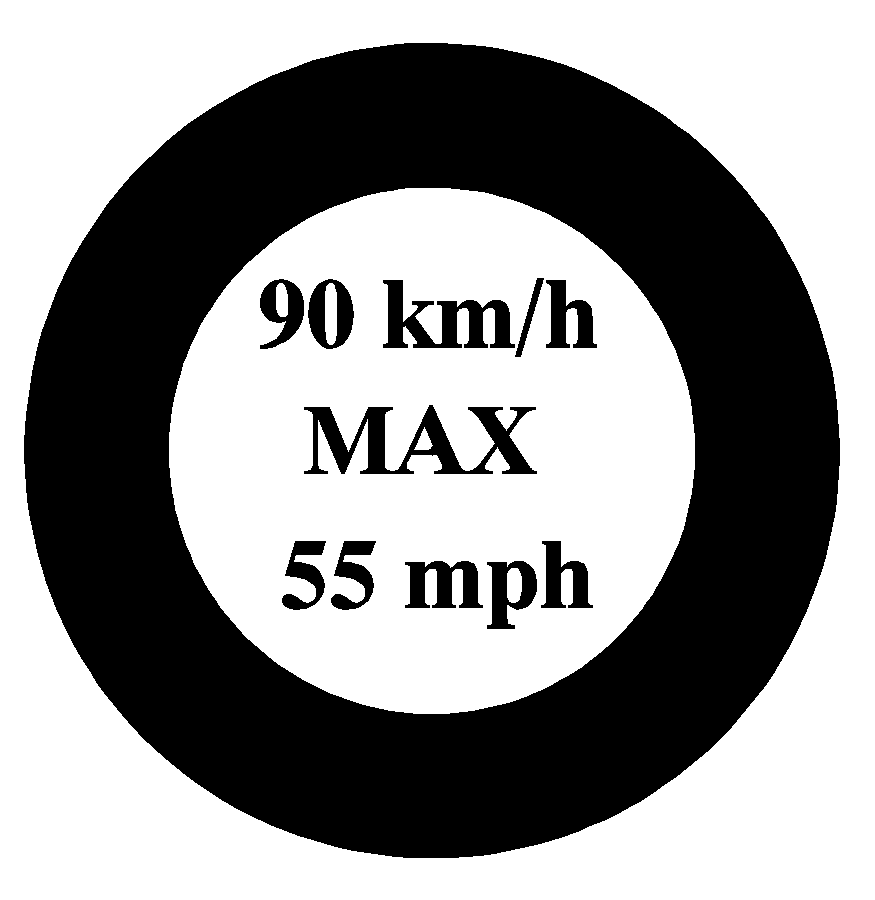The air compressor included in the tire inflator kit was designed exclusively for your vehicle. After the sealant has been injected into the flat tire, use the air compressor to inflate the flat tire.

Inflating Hose
Air Pressure Gage
ON/OFF Switch
Air Compressor Plug
To inflate the tire, do the following:
- Park your vehicle. If your vehicle has an automatic transmission, set the parking brake firmly and put the shift lever in Park (P). See Shifting Into Park for more information. If your vehicle has a manual transmission, move the shift lever to REVERSE (R) and set the parking brake firmly. See Parking the Vehicle for more information.
- Attach the nozzle on the compressor to the valve stem of the flat tire, and then insert the plug into an accessory power outlet on your vehicle.
- Start your vehicle.
- Turn the compressor on (I) to inflate the tire.
- If 26 psi (179 kPa) tire pressure is reached in six minutes or less, disconnect or turn off the air compressor.
- The maximum speed label reminds you to drive cautiously and not to exceed 55 mph (90 km/h) until you have the damaged tire inspected and repaired.
- Drive the vehicle immediately to distribute the tire sealant evenly inside the tire.
- After driving for 10 minutes, recheck the tire pressure. If the tire pressure is 19 psi (131 kPa) or more, inflate the tire to the standard operating pressure as shown on the Certification/Tire label located on the edge of the driver's door.


Caution: Idling the engine in a closed-in place or with the climate control system off can cause deadly carbon monoxide (CO). See Engine Exhaust .
Notice: The car engine must be running to avoid draining the battery while running the air compressor.
Caution: Overinflation could cause the tire to rupture, and you or others could be injured. Be sure to read the inflator instructions, and inflate the tire to its recommended pressure. Do not exceed 36 psi (248 kPa).

Inflate the tire to at least 26 psi (179 kPa), but not more than 36 psi (248 kPa).
Notice: If the air compressor runs for more than six minutes, at a time, it may overheat. The excessive heat could damage the compressor. Always operate the compressor for six minutes or less when inflating a tire.

Inflate the tire for up to a maximum of six minutes.
Notice: If 26 psi (179 kPa) tire pressure cannot be reached after six minutes the vehicle should not be driven farther. Damage to the tire is severe and the sealant will not be effective. Remove the air compressor plug from the accessory power outlet and unscrew the inflating hose from the tire valve. See Roadside Assistance Program .

Attach the enclosed maximum speed label to the inside upper left corner of the windshield or to the face of the radio/clock.
If the tire pressure has dropped below 19 psi (131 kPa), do not continue to drive the vehicle. The tire is severely damaged and the tire sealant will not be effective. Repair or replace the tire as soon as possible.
